The mountains of the ocean teem with otherworldly life.
A deep sea expedition along an expansive underwater ridge, focused on the area around Rapa Nui (Easter Island), spotted some 160 species never found before in this remote marine realm, including 60 species scientists think are completely new to science. A major goal of this mission — across the Salas y Gómez Ridge in the Pacific Ocean — is to identify places that should be protected from exploitation and the coming wave of deep sea mining.
The expedition visited 10 seamounts along the 2,900-kilometer-long (1,800-mile) range, though the greater range includes over 100 undersea mountains. Earlier this year, another Pacific Ocean seamount expedition off of Chile found perhaps 100 new species, too.
“The astonishing habitats and animal communities that we have unveiled during these two expeditions constitute a dramatic example of how little we know about this remote area,” Javier Sellanes, a professor in the Universidad Católica del Norte Department of Marine Biology in Chile who worked on the expedition, said in a statement.
Mashable Light Speed
Scientists captured the following imagery by lowering a deep sea robot, the ROV SuBastian, off of the Schmidt Ocean Institute’s hi-tech exploration vessel RV Falkor (too).
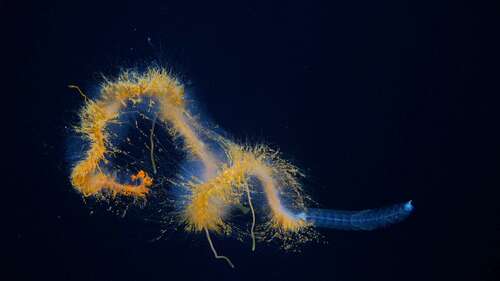
A long “galaxy siphonophore,” which is actually a colony of many organisms, spotted on a dive between 800 and 1,200 meters (2,625 to 3,940 feet) down.
Credit: Schmidt Ocean Institute
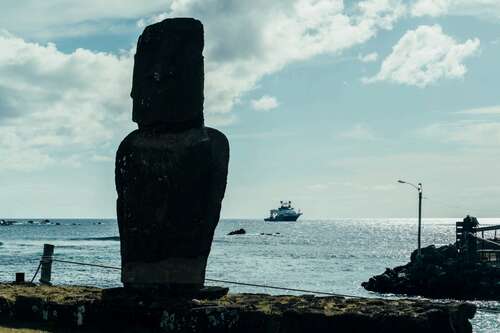
A moai on Rapa Nui (Easter Island), with the exploration vessel RV Falkor (too) in the background.
Credit: Misha Vallejo Prut / Schmidt Ocean Institute
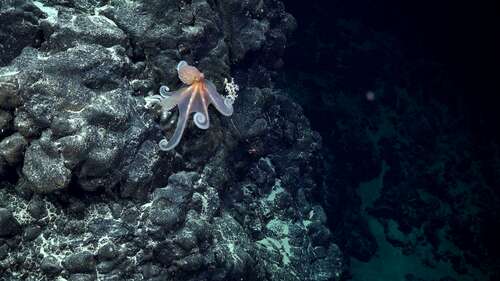
An octopus perched on a seamount along the Salas y Gómez Ridge.
Credit: Schmidt Ocean Institute
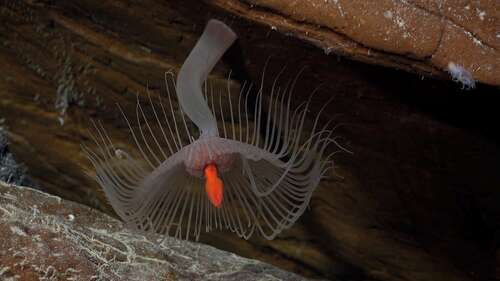
A hydroid living on the northern flank of Rapa Nui (Easter Island).
Credit: Schmidt Ocean Institute
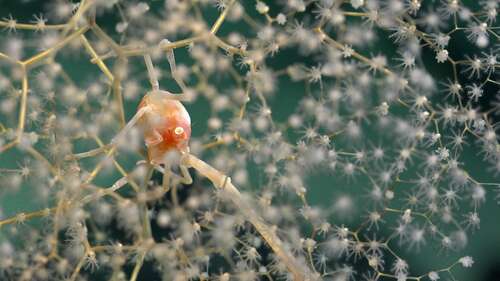
A squat lobster amid Chrysogorgia coral along the flank of an uninhabited island in the Salas y Gómez Ridge.
Credit: Schmidt Ocean Institute
Ocean research organizations are now vigilantly documenting and mapping the deep sea. Scientists want to shine a light — literally and figuratively — on what’s down there.
“We always discover stuff when we go out into the deep sea. You’re always finding things that you haven’t seen before,” Derek Sowers, an expedition lead for the National Oceanic and Atmospheric Administration’s Ocean Exploration mission, told Mashable.
The implications of knowing are incalculable, particularly as deep sea mineral prospectors prepare to run tank-like industrial equipment across parts of the seafloor. For example, research expeditions have found that ocean life carries great potential for novel medicines. “Systematic searches for new drugs have shown that marine invertebrates produce more antibiotic, anti-cancer, and anti-inflammatory substances than any group of terrestrial organisms,” notes the National Oceanic and Atmospheric Administration.

